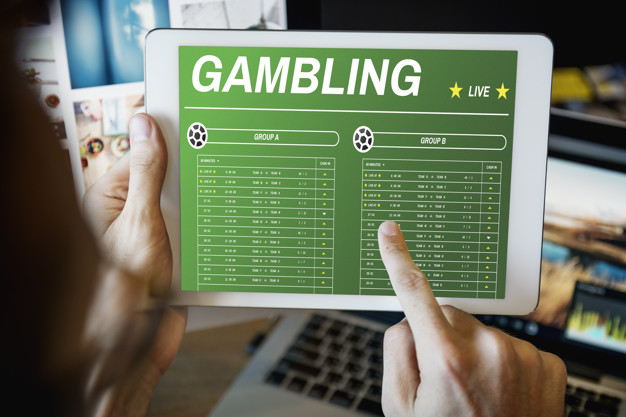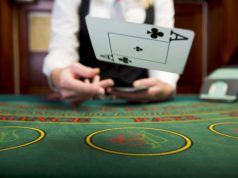
When it comes to odds associated with sports betting, they are fairly easy to understand once you work them out and what they mean.
In the UK, bettings odds are usually displayed in a fractional format, both online and in betting shops, where the European and US betting markets tend to display their odds in a decimal format. For now, though, we are sticking to the UK, where you are likely to see odds displayed something like 2/1 or 5/1 next to the name of the runner you fancy.
2/1 means that if you place a £1 bet and it wins, you will be paid out with a £2 profit. However, you’ll often see that not all odds will display X/1, which is when it comes a little more difficult to understand.
The same rules apply, but for example, an 11/4 winner, means that for every £4 wagered you will return £11 profit, so a £10 bet would get you £27.50 profit.
As we’ve mentioned, when you place a sports bet online through a bookmaker or sites such as oddsmanager.co.uk, you get the option, in most cases, to change the odds to decimal.
These will be displayed, for example, as 2.0, in which you simply times your stake with the decimal. So, 2 x £10 = £20, so a £10 profit. Commonly, these won’t be whole numbers, but again the same rules apply. For example, 6.5 x £10 = £65, so a £55 profit.
How To Pick Your Sports Bet

First of all, you obviously have to pick which sports and events you would like to bet on. Football betting is extremely popular around the world at the minute, along with horse racing which has long been associated with the betting industry.
For illustration purposes, we are going to take a look at horse racing and how you can go about putting a bet on the sport of kings.
Below we’ve put together an imaginary four-horse race to help illustrate what you might come across at any race meeting around the world.
Horse A – 1/1 (referred to as EVS, meaning evens)
Horse B – 4/1
Horse C – 4/1
Horse D – 10/1
In the race above, Horse A is what is described in betting terms as the favourite or the ‘jolly’. You can tell this because the odds are the lowest, which means it has the highest chance of winning according to the bookmaker. Making the implied probability of Horse A actually winning at 50%.
As you can see, Horse B has odds of 4/1. To get the percentage chance, you first need to change the fraction into its decimal form, which is 5.0. Simply divide that into 100 to get the percentage of 100/5. In theory, this gives Horse B a 20% chance of winning the race according to the bookies.
The same applies for Horse C who has the same implied chance of winning the race, while Horse D has the lowest chance of winning according to the bookies, and is what racing fans would consider to be ‘the outsider’ in the race which implied probability of just 10%.
This is what the bookies would describe as the ‘perfect book’ for a horse race as the percentages all add up to 100%.
Try not to get too bogged down with all of these, because although it might seem complicated, the percentages are more of a guide of how the race may pan out rather than a guarantee. Favorites often get beat and the rank outsiders can come up with trumps, it’s all about gambling responsibly with your horse racing bet.
What Are The Most Popular Online Sports Bets?

As you might have guessed by now, there is more to betting on sport than just picking one winner. Most sports bookmakers now offer a full range of betting types, with the most common being:
Win/on the nose/single – one bet on one selection to win one particular race
Each-Way – A win bet and a place bet on the same selection to win or to finish within the specified places
Double – Two selections from two different races. The winnings for a double are the odds of the horses X each other, so the winnings can be much greater.
Treble – A single bet on three different selections in three different races. All three selections must win for your bet to be a winner.
Accumulator – a bet made up of four or more selections in one bet. All of the selections must win for your bet to be successful. Visit here for a free Accumulator Bet Calculator.
Trixie – Four bets made up of three doubles and a treble. You need to make three selections to place this bet.
Yankee – This is a bet that requires you to make 4 selections, which will go into 11 separate bets. Six doubles, four trebles, and one four-fold accumulator.
What Are Fixed Odds In Sports Betting?

Looking back on our imaginary horse race above, you will see there that we used fixed odds. This means that those are the odds that you will be paid out if your selection wins.
For example, if you backed Horse B at odds of 4/1, but then the odds change to 3/1 before the race starts, you will still be paid out at 4/1. Punters often refer to this as beating the price.
You’ll see that the fixed odds will fluctuate fairly regularly in the build-up to the race, sometimes shortening or getting bigger. There are a number of factors that can affect this kind of movement from something the trainer may say in a pre-race interview to an increase in people betting on that particular horse.
Keep an eye out for the odds moving and try to place your bet at the best odds available to you. Some online bookmakers now even offer the best odds guaranteed, especially on big races like the Grand National, which either gives you the fixed odds you backed it at or if it fluctuated to a bigger price – you’ll get whatever was bigger.












